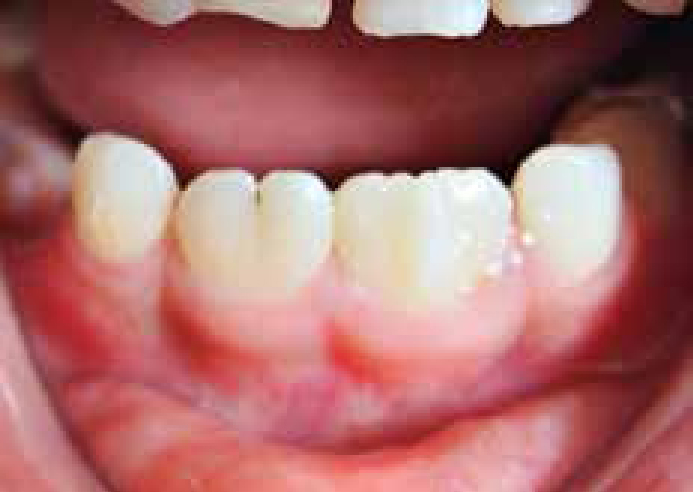Article
I would like to share with you an unusual case of bilateral double teeth. In our community dental service, I was referred a 7-year-old boy for management of rampant caries in his posterior primary dentition. On examination, an incidental finding was two double teeth in his incisor region (Figure 1). These were asymptomatic and his mother reported a similar appearance to his primary teeth before they exfoliated.

Prevalence of double teeth is 0.5–1.6% in the primary dentition, which decreases to 0.1–0.2%1 in the permanent dentition. As in this case, double teeth are most common in the anterior dentition and can be caused by gemination, fusion and twinning.2 Gemination occurs as a result of attempted division and fusion when two separate tooth germs have joined (namely the central and lateral incisors bilaterally), which seems to be the case in this situation. The aetiology of double teeth is unknown. Theories include environmental factors, trauma, systemic diseases, genetic factors or vitamin deficiencies.3
Radiographic examination suggests that the apices of these fused teeth have not matured and an incidental finding was the appearance of possible rotated upper permanent incisors, which supports suggestions that dental anomalies can be closely associated (Figure 2).4 (Note also the large periapical radiolucency associated with the lower right second primary molar).

No active treatment on these teeth was carried out at this stage, as his parents found the appearance acceptable. We plan to monitor the development of the patient's occlusion, as double incisor teeth are at increased risk of a malocclusion,5 and for any pulpal pathology. Should treatment be indicated in the future, a multidisciplinary approach is recommended with restorative and orthodontic input.6
